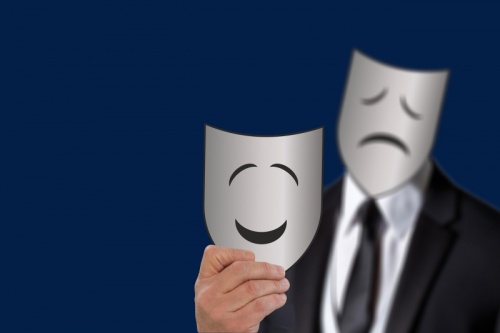Taking into consideration the name of this disease, we can understand that it is a combination of two other disorders - mania and depression.
Due to the emotion's change across the spine of two poles, it may be also called bipolar disorder or biphasic disorder, determined from the two mutating phases.
When mania's symptoms are at lower levels, then we refer to the term "hypomania".
Emotion
From an emotional perspective, mania is characterized by "hyperemia" which means high mood, whilst depression is characterized by "hypothemia" which means low mood.
Thought
In terms of thinking, mania may be characterized by the difficulty to concentrate and paying attention, whereas there may be a plethora of ideas and confusion which are expressed through more talkativeness than usual.
Additionally, the individual may express grandiosity, which means that the person believes and shows views reflecting an overestimation of oneself to an excessive degree, which does not correspond to reality. Also, an implementation of grandiose and unrealistic plans may be observed.
In regards to depression, the person is not so talkative and there is a tendency to express pessimistic ideas for oneself and the situation around.
Behavior
From a behavioral viewpoint, people who have mania may have a decreased need for sleep, be more active, more aroused and excessively social. Also, uncontrollable expenses and hypersexuality may be observed with moral inhibitive acts that may expose oneself and others.
In depression, people have an opposite behavior by being emotionally and socially distant, avoiding social interactions and neglecting personal care and hygiene.
This disorder is common in both sexes and may occur at any point in one's life.
This chronic disorder may severely affect the functionality of the sufferer.

